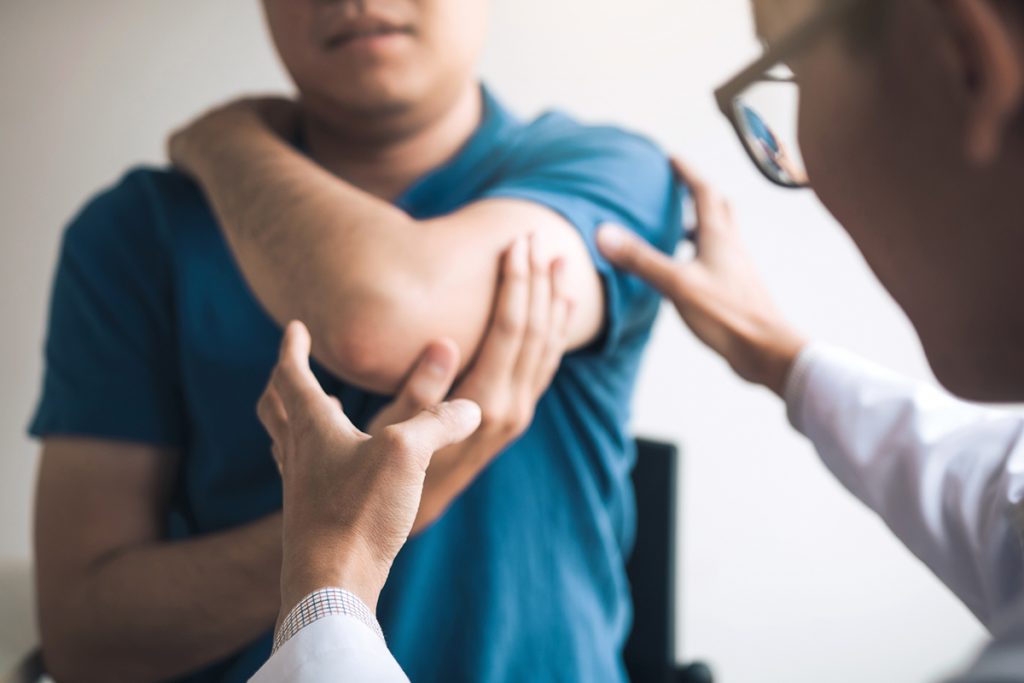
Key points
- It is important to discern rotator cuff, glenohumeral joint and acromioclavicular joint pain as management varies
- Physiotherapy is particularly beneficial for rotator cuff syndrome
- Ultrasound and MRI are not usually useful in primary care and can be misleading
- A careful history can distinguish bilateral shoulder disorders from an inflammatory condition like polymyalgia rheumatica
- Red flags include pain radiating to the shoulder blade, axilla and along the ulnar side of the arm
By Dr Lucy Douglas, Krystian Dawiec and Dr Elspeth Wise
Q: The most common type of shoulder pain seen in general practice – diffuse shoulder pain with limited abduction and rotation – has a variety of descriptors, such as adhesive capsulitis, rotator cuff syndrome and supraspinatus tendonitis. Do these amount to the same problem, especially in terms of management?
A: Shoulder pain falls into three main groups: ‘rotator cuff pain’ or pain coming from the subacromial space; glenohumeral joint pain (including frozen shoulder and osteoarthritis of the glenohumeral joint); and acromioclavicular joint pain. The group seen most commonly in primary care is rotator cuff pain, where the patient has pain on specific movements: they may have limited active movements but will generally have normal passive movements.
Passive external rotation is probably the easiest and most important to check. If this is normal, treat as rotator cuff pain. If limited, this suggests the pain is coming from the glenohumeral joint. Acromioclavicular joint pain is generally well localised to the joint and there is point tenderness.
It is important to differentiate between these three patterns, as management varies. The cause of rotator cuff pain in primary care is often irrelevant, provided you have ruled out red flags (particularly trauma, or other worrying factors such as associated systemic symptoms) and that there is nothing unusual about the pain (for example, it is extremely severe, or it is gnawing at rest).
The treatment for rotator cuff pain is pain relief and exercise. Initially it is reasonable to encourage the patient to try to use their shoulder normally instead of advising any specific exercises. However, if the pain continues after a few weeks consider referring to physiotherapy for specific rehabilitation. If, after a reasonable trial of physiotherapy, the patient remains in pain, consider a steroid injection followed by return to the rehabilitation programme.1
Glenohumeral or acromioclavicular joint pain may be related to osteoarthritis. An X-ray may help to confirm this. It should be managed in line with osteoarthritis elsewhere – with education, simple analgesia, exercises and, if needed, steroid injections or surgery.2
Glenohumeral joint pain from a frozen shoulder may be managed with a steroid injection and basic exercises. Severe and disabling pain or restriction requires referral.
Not a Pulse Learning member? Click here to join and gain access to more than 400 CPD modules
Pulse July survey
Take our July 2025 survey to potentially win £1.000 worth of tokens












Missing is the “NHS waits to see anyone useful are approaching infinite, are you prepared to pay privately?” question.